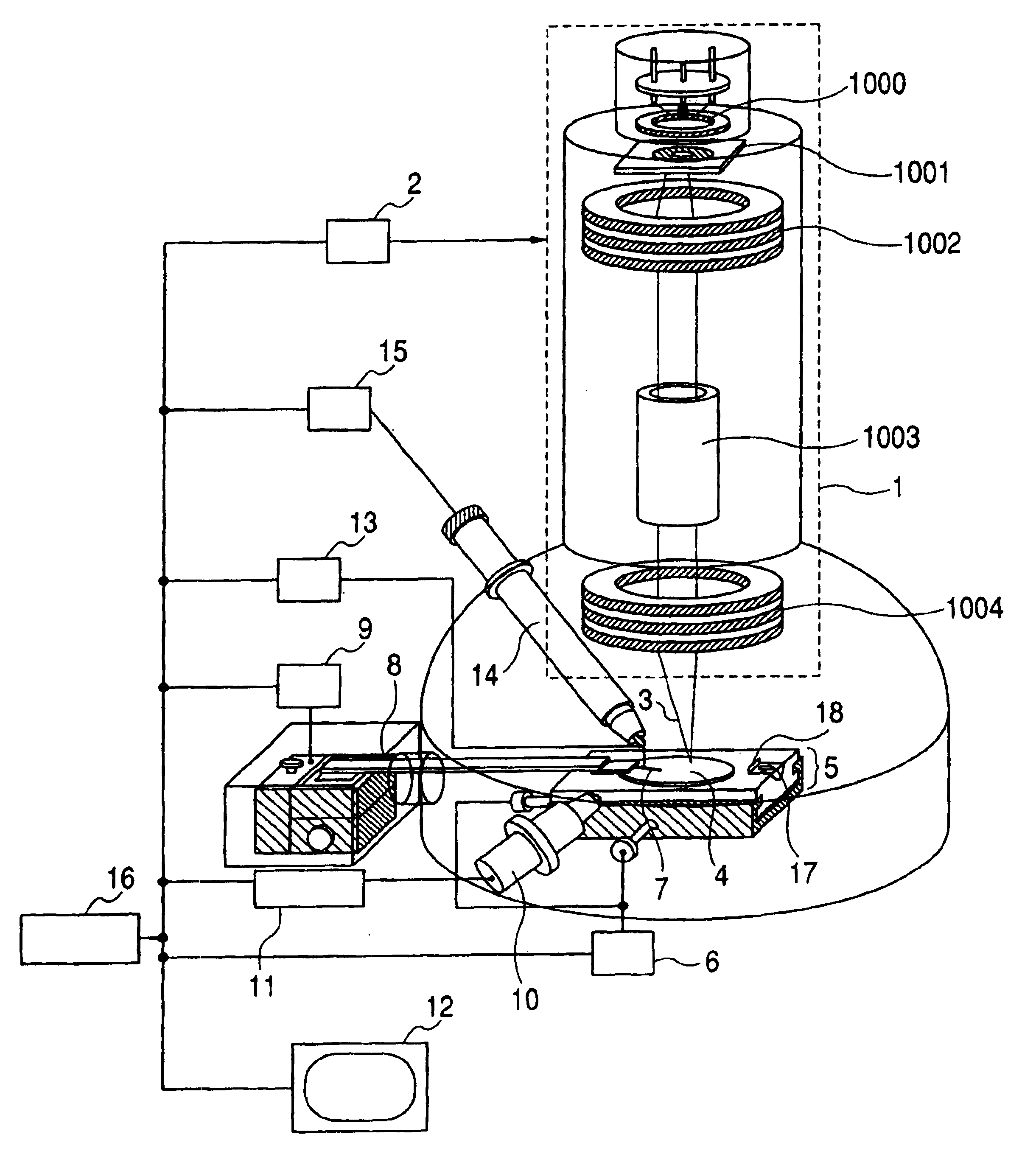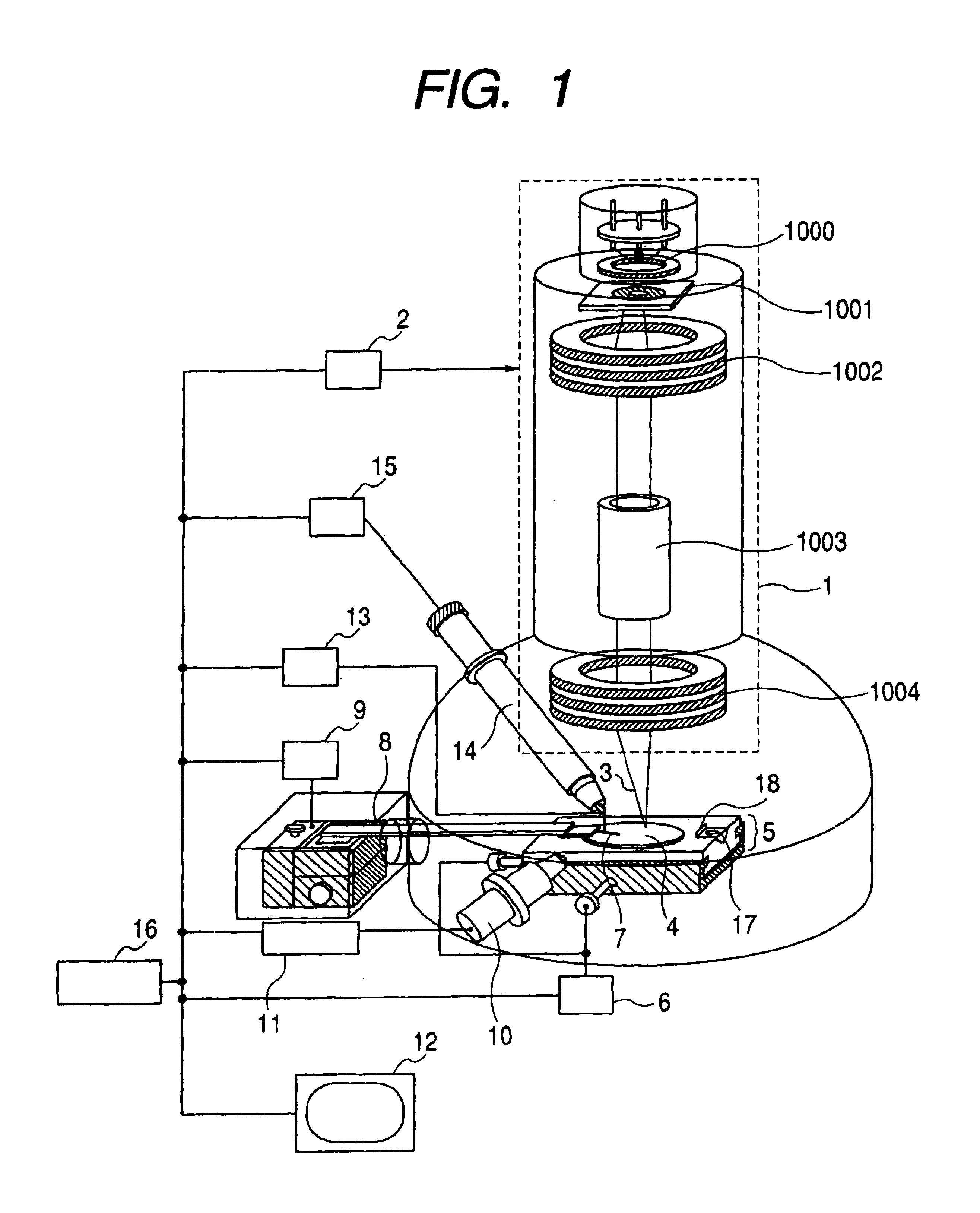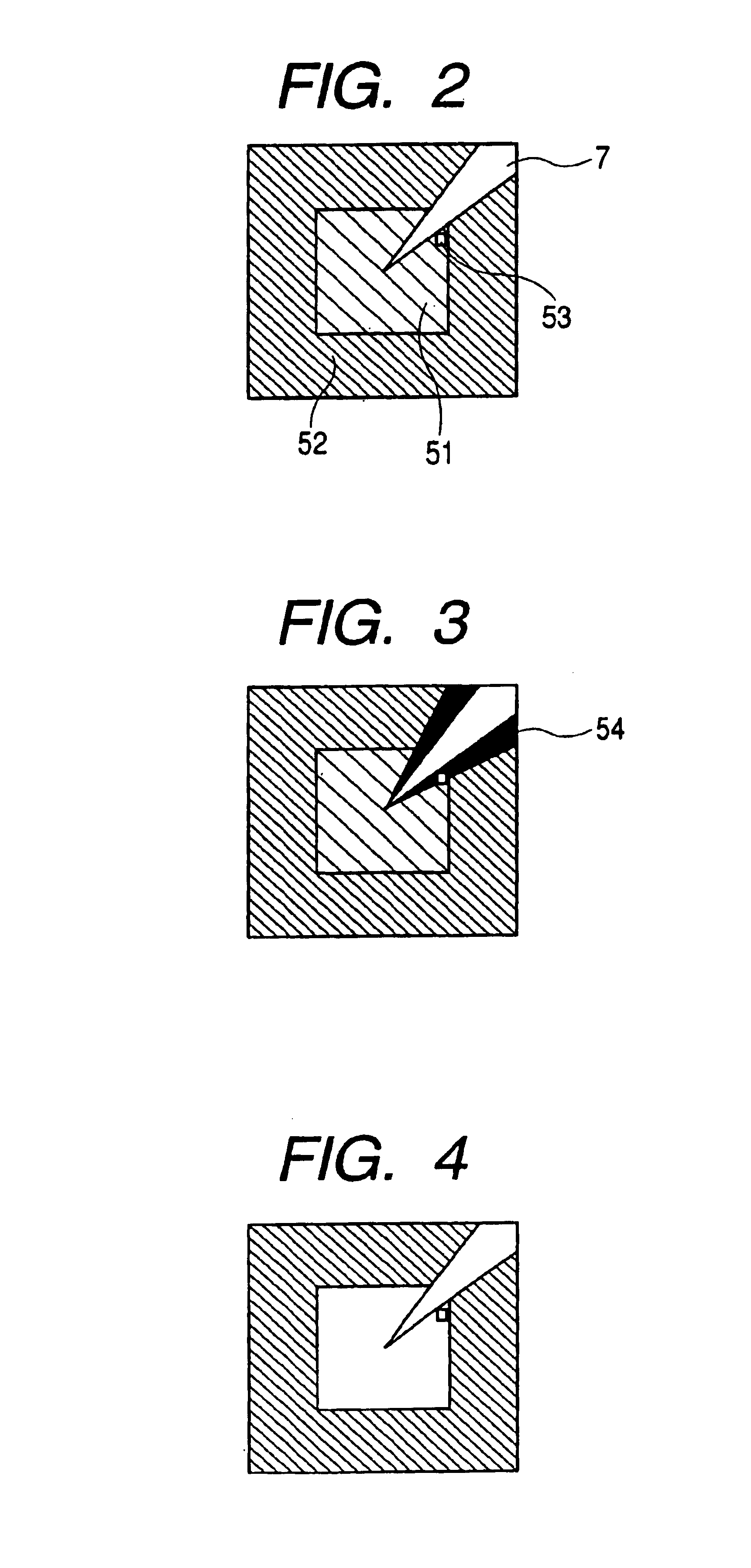Probe driving method, and probe apparatus
a driving method and probe technology, applied in the direction of mechanical roughness/irregularity measurement, semiconductor/solid-state device testing/measurement, instruments, etc., can solve the problems of no detection, reduced overall speed at which the probe approaches the sample, and longer time before contact, so as to facilitate the control of the probe
- Summary
- Abstract
- Description
- Claims
- Application Information
AI Technical Summary
Benefits of technology
Problems solved by technology
Method used
Image
Examples
embodiment 1
(Embodiment 1)
[0051]FIG. 1 shows a block diagram of an embodiment of the sample preparation apparatus according to the present invention for preparing a microscopic analysis sample or a microscopic device by a focused ion beam (FIB).
[0052]A sample 4 to be analyzed, such as a semiconductor wafer or chip, is mounted on a movable sample base 5 and positioned by a sample base control apparatus 6. The sample base control apparatus 6 controls the position of the sample base 5 for determining the diagnosis position of the sample 4. A removed sample holder 18 for mounting a removed sample is fixed by a removed sample holder retainer 17 on the sample base 5. A probe 7 detects device characteristics such as the resistance and current in the sample 4 as well as supplying voltage thereto, under the control of a probe electric control apparatus 13. The probe 7 is driven by a probe driving apparatus 8 which is controlled by a probe control apparatus 9.
embodiment 2
(Embodiment 2)
[0071]The process of monitoring the probe-to-sample distance will be described by referring to FIGS. 13-16. While the pre-contact detection technique was described in Embodiment 1, in the present embodiment, the method of identifying the current distance between the probe and the sample will be described.
[0072]FIG. 13 schematically shows the relationship among an ion emitting portion 62 of the FIB optical system, a probe 7 and a sample 4. FIG. 14 shows an observed image displayed on a display apparatus 12. Numeral 61 designates a specific position on the surface of the sample that is indicated by a marking produced by FIB processing. The position, however, may be indicated by a structural feature on the sample. When the probe 7 and the sample 4 are irradiated with the FIB in an inclined manner such that the angle formed by the beam and the optical axis of the system is θ1, the distance between the tip of the probe 7 and the marking 61 is observed as d1 in the observed ...
embodiment 3
(Embodiment 3)
[0084]Referring to FIG. 18, a method of controlling the probe such that the probe tip is transported parallel to the sample surface and brought immediately above a target position of the sample will be described. FIG. 18 shows an SIM image. Numeral 7 designates a probe, 73 and 74 designate marks formed by a FIB, and 78 designates an FIB processed opening. Numeral 75 designates a sample to be removed. The object of the probe operation is to bring the tip 71 of the probe into contact with a probe connection portion 72 of the removed sample 75. A reference image 76 of the probe tip is acquired from the SIM image in advance. Numeral 71 designates the position of the probe tip. Numeral 77 designates an FIB mark reference image for identifying the probe connection portion. By matching the SIM image against the reference images 76 and 77, the position corresponding to the probe tip position in the reference image 76 is identified as the position of the probe tip 71. Likewise,...
PUM
| Property | Measurement | Unit |
|---|---|---|
| distances | aaaaa | aaaaa |
| distances | aaaaa | aaaaa |
| thickness | aaaaa | aaaaa |
Abstract
Description
Claims
Application Information
 Login to View More
Login to View More - R&D
- Intellectual Property
- Life Sciences
- Materials
- Tech Scout
- Unparalleled Data Quality
- Higher Quality Content
- 60% Fewer Hallucinations
Browse by: Latest US Patents, China's latest patents, Technical Efficacy Thesaurus, Application Domain, Technology Topic, Popular Technical Reports.
© 2025 PatSnap. All rights reserved.Legal|Privacy policy|Modern Slavery Act Transparency Statement|Sitemap|About US| Contact US: help@patsnap.com



